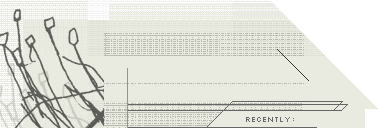After signs lose touch with the signified, and after the industrial era is
surpassed by a code-governing phase where the predominant schema is simulation, folk songs such as these, harvested by
ethnomusicologist John Levy during his journey through Bhutan in the
'70s, penetrate the air like an echo from another world.
While the
first edition in this marvelous series focused on pensive, ceremonious drones, this volume
concerns itself with the raw, unabashed voices of monks, young shepherd girls,
and other lay people, nestling them inside arrangements that are sometimes ornate, sometimes skeletal, and often luminescent. Music as a social organization of symbolic meaning is the clear focus. As the extensive linear notes make plain, each piece is steeped in heritage. "Ura Gi Ache Lham," for instance, is traditionally sung by women from Ura, a valley in the Bumthang District, who
venture atop a local mountaintop each year to sing this very song.
The instruments, too, are no longer simply objects. The
Bhutanese dramnyen (a seven-string guitar), for example, looks like a pregnant
woman, and is generally referred to as the sea monster. The design scrawled across its bloated belly is also the emblem of
Kamadeva, the god of love. Time has overtaken the form of the instrument, making it a solidified substance imbued with a certain sort of spirit.
All of this serves to present a labyrinth of fascinating avenues to explore. Once again, John Levy does as much as he can to remove himself from the proceedings. What emerges is rather bluesy guitar lines, fiddles moving forward at a sometimes measured, sometimes delirious
pace, and a bevy of melodious, whistling flutes and lutes. At times the
arrangements are densely
woven, with woody dramnyen notes coiling and snapping around a wobbly
rhythm section that
stutters, stops, and changes pace on several occasions. At other moments,
however, the dramnyen is
cleaner, the woodblock clatter a more haunting tangle of splintered chirps
and clanking knocks,
and the voices lapse into a grave, almost distressed chorus of moaning.
The
compositions constantly
upset, accentuate, and elaborate on each other; the wraiths of
flute and sprightly choral
vocals curl like smoke, crafting an elaborate web to yoke together rituals
and people otherwise
isolated and devoid of meaning.

